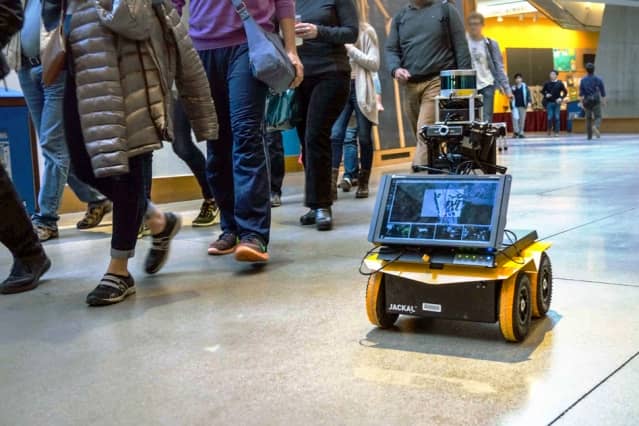Robots don’t have souls, right? That leaves us worrying about the ethical problems that will arise with artificial intelligence. Well, robots are just machines, but if they are as loving as Baymax, you are bound to fall in love with them. Unfortunately, such adorable robots were limited only to Disney movies until researchers at Massachusetts Institute of Technology came up with a realistic version of the very loved Disney robot Wall-E.
The MIT robot is developed with an awareness of social norms so it can navigate through crowds of people with perfect mannerism. Anyone would expect a robot to manoeuvre without bumping into people on its way. However, this robot can decide to operate on the left or right side of a walkway, a street, or a corridor according to the norms of the country it is operating in.
Yu Fan, the lead researcher, explained the motivation saying,
“Socially aware navigation is a central capability for mobile robots operating in environments that require frequent interactions with pedestrians. For instance, small robots could operate on sidewalks for package and food delivery. Similarly, personal mobility devices could transport people in large, crowded spaces, such as shopping malls, airports, and hospitals.”
Any robot that needs to manoeuvre through public is equipped with such capabilities, but the MIT team placed emphasis on human interaction. The robot was developed with a focus on social norms and the unpredictability in human beings. It uses RGB cameras and LiDAR array along with face-detection technology to ensure that it recognizes people and then decides its route. It also predicts the path that the human will take and then weaves its way through with absolute politeness. The polite navigation capabilities of the robot make it ideal for public places like hospitals and malls where it will maintain its lane while giving priority to human walkers.
“The knock on robots in real situations is that they might be too cautious or aggressive. People don’t find them to fit into the socially accepted rules, like giving people enough space or driving at acceptable speeds, and they get more in the way than they help,” explained the paper’s co-author Michael Everett.
If you fear scary robots taking over our lives and walking through our streets, this MIT robot is exactly what you should be looking forward to. Imagine the kind of possibilities a technology of this sort could offer. Unique and endless!

